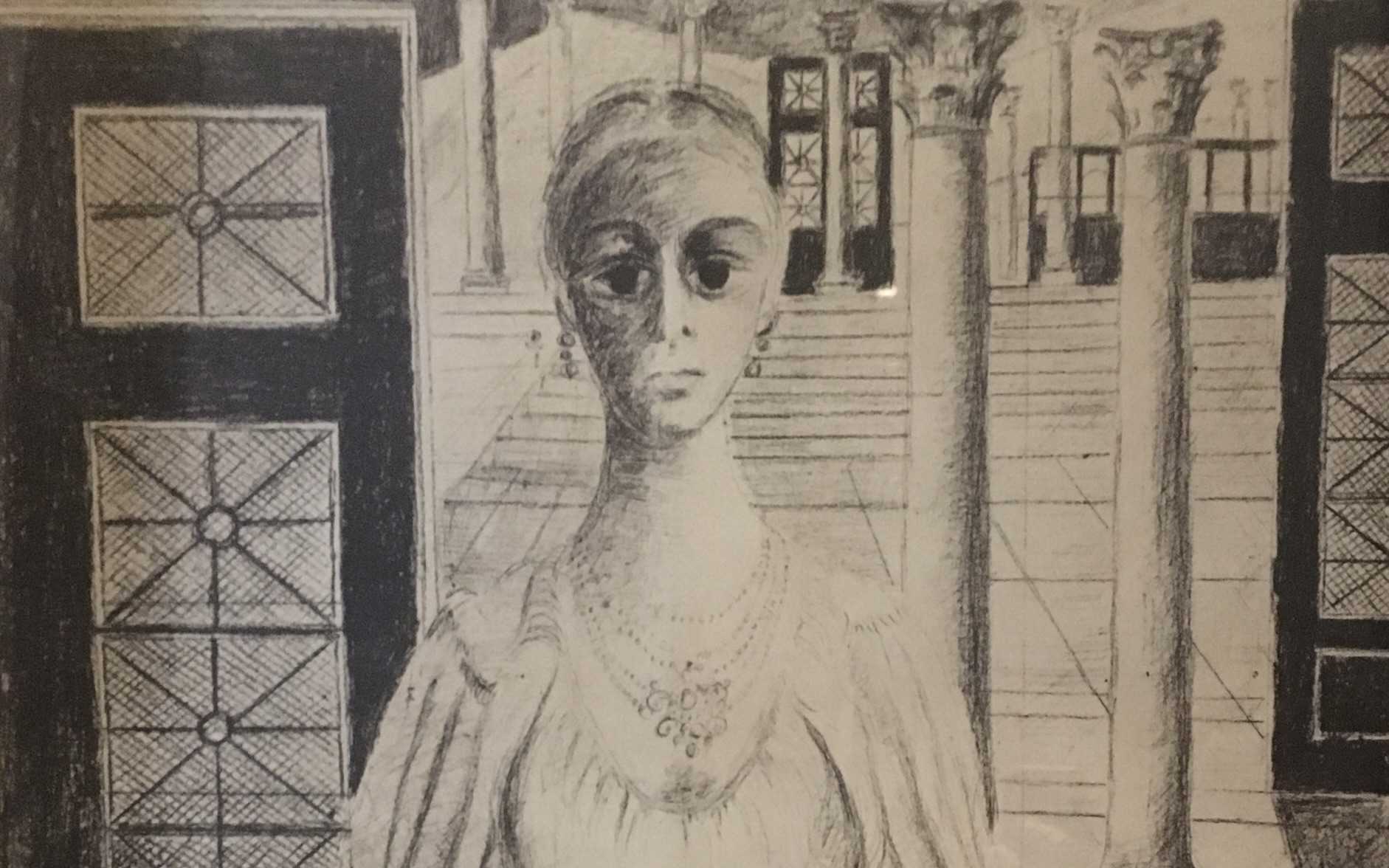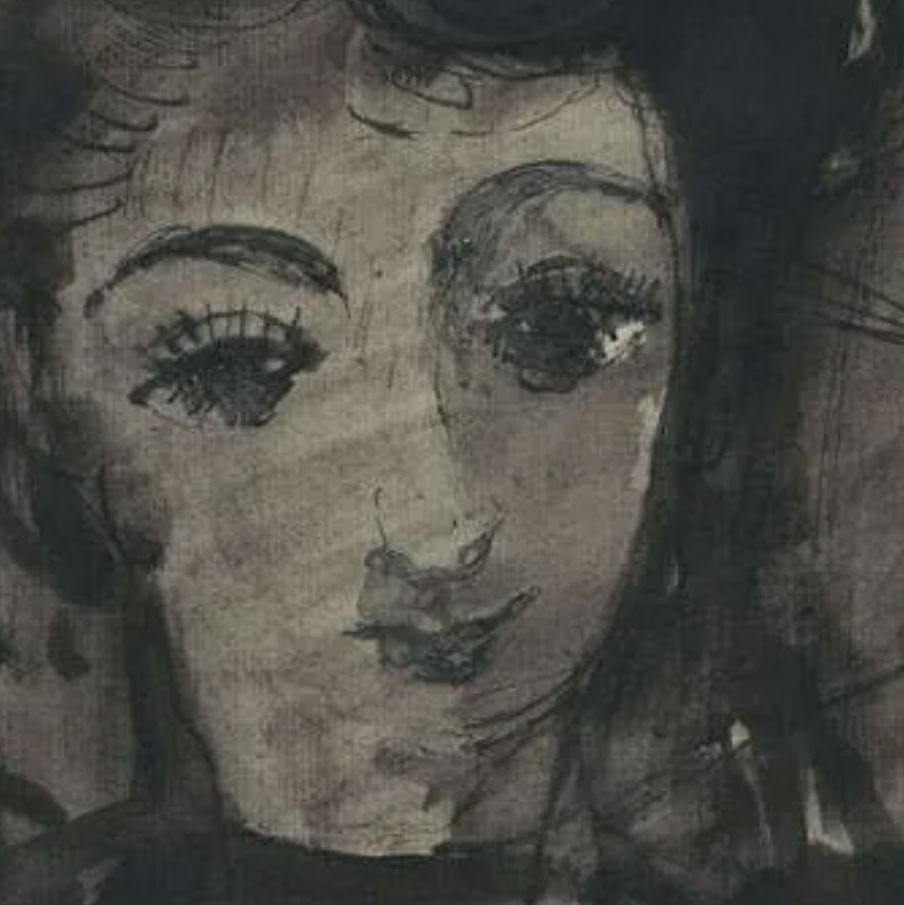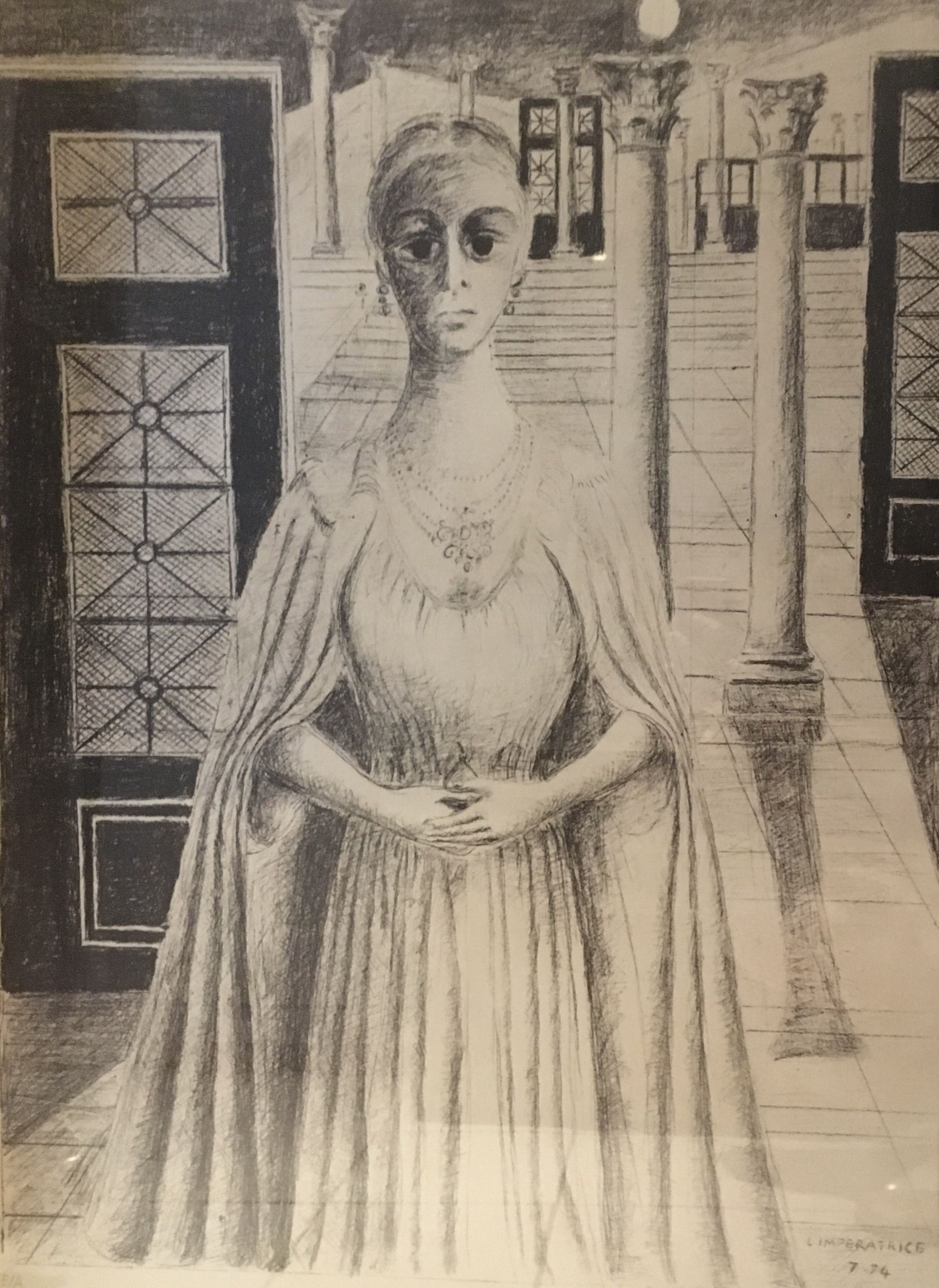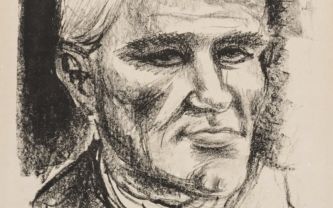Rating and value of paintings, drawings and lithographs by Paul Delvaux

If you own a work by or based on the artist Paul Delvaux and would like to know its value, our state-approved experts and auctioneers can help you.
Our specialists will carry out a free appraisal of your work, and provide you with a precise estimate of its current market value.
Then, if you want to sell your work, we'll point you in the right direction to get the best possible price for it.
Artist's rating and value
A contemporary Belgian artist, Paul Delvaux is known for his significant contribution to the art history of his time, notably as a member of the Post-Impressionist, Expressionist and Surrealist movements.
Paul Delvaux's creations are quite common on the auction market. Appreciated by collectors, their value is stable. A work signed by Delvaux can fetch millions of euros.
A case in point is his painting Le miroir, dating from 1936, which sold for €8,453,120 in 2014, whereas it was estimated at between €7,264,400 and €9,906,000.
Order of value from the most basic to the most prestigious
Technique used | Results |
|---|---|
Print - multiple | From €5 to €71,650 |
Drawing - watercolor | From €300 to €555,620 |
Oil on canvas | From €1,050 to €8,453,120 |
Response in less than 24h
The artist's works and style
Paul Delvaux, master of Belgian surrealism, developed a singular style, marked by the alliance of dream and reality. In his works, he explores dreamlike scenes in which hieratic, nude female figures wander through classical architectural settings, often bathed in moonlight.
His precise, meticulous technique echoes that of Renaissance painters, with particular attention to detail and perspective. However, unlike traditional realism, Delvaux introduces a strange, almost unreal atmosphere.
The figures seem frozen in time, their faces impassive and their gestures suspended, creating a disturbing contrast with the emotional intensity suggested by the environment. Trains, omnipresent in his work, become symbols of travel, escape or flight, reinforcing this impression of floating between two worlds.
Delvaux's palette, often cold and subtle, contributes to this feeling of strangeness, while evoking a silent, melancholy beauty. His art, at once poetic and mysterious, is part of a quest for the unconscious, seeking to reveal what lies behind the veil of appearance.


The life of Paul Delvaux
Paul Delvaux, born in Antheit in 1897, was a contemporary Belgian artist whose life was marked by an unstable childhood, dominated by his mother's rigid authority. This strict, suffocating family climate left a deep imprint on his imagination and future creations.
From his studies at the Beaux-Arts in Brussels, he distinguished himself by his fascination with skeletons, which he explored alongside Émile Salkin. Under the influence of Jean Delville and Constant Montald, he acquired the technical foundations that would shape his work: mastery of composition, nudes and landscapes.
Delvaux's early paintings were in a post-impressionist vein, faithful to the influences of the time, but marked by a strong search for realism. However, the influence of James Ensor gradually pushed him towards Expressionism.
The faithful representation of nature gradually gives way to a freer interpretation, where the expression of feelings takes over from mere observation. Composition remains central to his art, but strict realism is replaced by a more personal, introspective style.
It was in this quest for emotional expression that Delvaux moved towards surrealism, a decisive turning point in his career. Surrealism enabled him to explore dreamlike worlds, populated by enigmatic female figures and skeletons, the latter paradoxically imbued with a certain vitality.
These recurring elements, often set against architectural backdrops, create a striking contrast between the fixity of the figures and the latent emotional intensity. This tension between life and death, stillness and movement, gives his works a unique atmosphere, both serene and unsettling.
Delvaux thus established himself as an extraordinary artist, whose work transcends the boundaries of reality and dream. His paintings, bathed in moonlight and an almost palpable silence, reflect a profound sensitivity.
Although he has enjoyed success in Belgium, he has also made a name for himself internationally, exhibiting in many European countries, including France, where his work is particularly appreciated.
In recognition of his contribution to art, he is named correspondent of the Académie des Beaux-Arts in Belgium. Delvaux's career was rich in successes and artistic discoveries, leaving a lasting mark on the world of surrealist art.
Despite the singularity of his work, Paul Delvaux remained faithful to his favorite themes, subtly blending the real and the imaginary, life and death, in compositions of fragile yet powerful beauty.
Paul Delvaux's surrealist exhibition in Paris
Focus on Paul Delvaux's Sleeping Venus, 1944
Paul Delvaux's Sleeping Venus, a work emblematic of his surrealist universe, plunges the viewer into a silent dream, where strangeness rubs shoulders with classical beauty.
The female figure, central to Delvaux's work, appears here as a modern Venus, reclining in a timeless architectural setting.
Her relaxed posture and naked body are reminiscent of classical representations of the goddess of love, but Delvaux, true to his style, infuses this scene with a deeply dreamlike ambience.
The painting's composition is rigorously constructed. The Venus, reclining in a resting position, seems disconnected from the world around her. Her face is serene, almost frozen, and the nakedness of her body contrasts with the coldness of the classical columns surrounding her.
This architectural setting is typical of Delvaux, who likes to create settings reminiscent of antiquity or indefinable, timeless places. Here, the columns not only anchor the scene in a bygone era, but also contribute to the painting's mysterious atmosphere.
They form a kind of silent theater, an enclosed space where dreams and reality meet.
The influence of the classical masters can be felt in the depiction of the female body, but the almost clinical coldness of the scene breaks with the sensual warmth usually associated with Venus. The color palette, dominated by pale tones and shades of blue, contributes to this atmosphere of mystery.
The light, diffused and almost unreal, seems to bathe the scene in a lunar glow, reinforcing the impression of a suspended world, where time has no hold.
This contrast between formal beauty and emotional coldness is at the heart of Delvaux's work. While the sleeping Venus seems frozen in a peaceful slumber, the scene also exudes a certain melancholy. This immobility reinforces the sense of strangeness.
The viewer is both fascinated by the plastic perfection of the body and disturbed by the lack of emotion emanating from the figure. Delvaux's inspiration for classical figures empties them of their sensuality, turning them into distant, almost inaccessible icons.
The presence of skeletons, a recurring motif in Delvaux's work, sometimes reinforces this dialogue between life and death, but here they are absent, leaving room for a different kind of reflection. The Sleeping Venus seems to be suspended between two worlds: that of eternal beauty and that of the unconscious.
This ambivalence is typical of Delvaux, who seeks to deconstruct myths in order to better explore the mysteries of the human soul.
In conclusion, Paul Delvaux's Sleeping Venus is a work in which form and content subtly intertwine to create a painting that is both classic and resolutely modern.
Blending ancient references with a surreal atmosphere, Delvaux invites the viewer to plunge into a world of reverie, where beauty and strangeness coexist in silent harmony.

The legacy of Paul Delvaux
The legacy of Paul Delvaux, the emblematic figure of Belgian surrealism, extends far beyond the borders of his native country. Delvaux's unique approach, which blends classicism and dreamlike imagery, created a deeply personal universe where mystery and introspection take center stage.
His works, marked by deserted architectural scenes, enigmatic female figures and references to classical mythology, continue to influence many contemporary artists.
In the 20th century, he is as well known as artists such as Émile Deckers, Louis Buisseret or Henri de Groux.
Delvaux redefined the representation of body and space, constantly playing on the tension between presence and absence, dream and reality. His fascination with Antiquity and skeletons, far from being macabre, expresses a poetic reflection on the human condition, where beauty and the transience of life coexist.
Today, his paintings are exhibited in the world's leading museums, and his work is the subject of academic studies that testify to its importance in the history of modern art.
Delvaux's impact, while discreet, resonates across generations, making him a timeless artist whose imagination continues to fascinate and inspire.
His signature
Not all Paul Delvaux's works are signed.
Although there are variations, here is a first example of its signature:

Appraising your property
If you own a work by Paul Delvaux, don't hesitate to request a free appraisal by filling in our online form.
A member of our team of experts and certified auctioneers will contact you to provide an estimate of the market value of your work.
If you're thinking of selling your work, our specialists will also guide you through the various alternatives available to obtain the best possible price, taking into account market trends and the specific features of each item.
Response in less than 24h
Related topics

Rating and value of Otto Dix's paintings, drawings and prints
Otto Dix was a 20th-century German Expressionist artist who produced drawings, prints and paintings that are highly regarded.
Read more >

Amalric Walter vases 2024 rating and value
Amalric Walter is a twentieth-century glassmaker who produced works for Daum that are highly prized at auction.
Read more >

Cote et valeur 2024 des tableaux, dessins, peintures de Jean...
Jean Le Mayeur is a twentieth-century Belgian luminist painter whose works are highly prized at auction.
Read more >
Secure site, anonymity preserved
State-approved auctioneer and expert
Free, certified estimates

